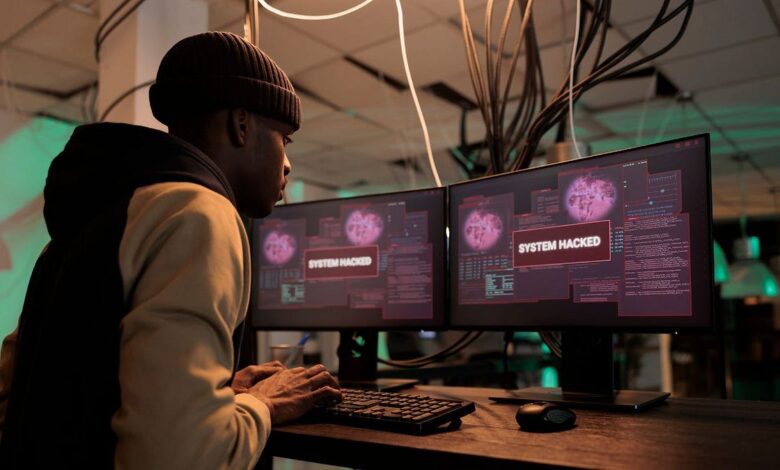Cybersecurity: A Growing Threat to Higher Education | by ArmourZero | Apr, 2024

Universities have a lot of data and are undergoing a digital revolution. From research findings to financial information and intellectual property, these institutions hold a wealth of sensitive information that cybercriminals see as prime targets. However, this increased reliance on technology comes with a price: a growing vulnerability to cyberattacks.
There are several reasons why universities are attractive targets for cybercriminals:
- Large volumes of sensitive data: Universities store a vast amount of personal information, including student names, addresses, ID numbers, and financial data.
- Cutting-edge research: Universities are often at the forefront of groundbreaking research, making their intellectual property highly valuable.
- Complex IT infrastructure: Universities rely on complex IT systems to manage everything from online learning platforms to administrative functions. These systems can be vulnerable to attack if not properly secured.
- Lack of awareness: Many students, faculty, and staff may not be aware of the latest cyber threats and how to protect themselves online.
- In 2021, the National University of Singapore (NUS) Society, fell victim to a cyberattack that resulted in the theft of personal data belonging to 1,355 members. The stolen data reportedly included full NRIC numbers (Singapore’s national identification number), names, dates of birth, nationalities, genders, marital statuses, email addresses, phone numbers, work and home addresses, vehicle registration numbers, university degree details, and even food and beverage order history. This incident highlights the vast amount of sensitive information universities hold and the potential consequences of a cyber threat.
- In February 2024, a cyberattack targeted the University of Hong Kong’s (HKU) Faculty of Education, raising concerns about a potential data leak. The attack may have compromised personal information belonging to around 7,400 individuals, including students, academic visitors, and research program applicants. Leaked data could include names, learning progress for students, abstracts of research proposals, and internal documents dating back to 2012. This incident highlights the vulnerability of various forms of data held by universities, not just student records.
- In 2021, University of Indonesia (UI) reported a suspected leak of email addresses belonging to the university community on the website of the Directorate of Research, Community Service, and Innovation (DPM UI). Additionally, in 2020, the Faculty of Computer Science (Fasilkom UI) website allegedly experienced a data breach affecting user information.
A successful cyberattack on a university can have a devastating impact, leading to:
- Data breaches: Exposed student records can lead to identity theft and financial fraud. Leaked research can damage academic integrity and give competitors an unfair advantage.
- Operational disruption: Cyber threat can cripple university systems, disrupting online learning, email communication, and other critical functions.
- Financial losses: Universities may face significant costs to recover from a cyberattack, including repairing damaged systems, hiring cybersecurity experts, and complying with data breach notification laws.
- Reputational damage: A cyberattack can erode public trust in a university’s ability to protect sensitive data. This can make it difficult to attract students, faculty, and research funding.
To combat the growing threat of cyberattacks, higher education institutions must adopt a multi-faceted approach to cybersecurity, such as:
- Risk Assessment and Vulnerability Management: Regularly check computer systems and networks for holes that hackers can exploit. Fix these problems and stay informed about new cyber threats.
- Cybersecurity Awareness Training: Teach lecturers, staff, and students how to be safe online. This includes using strong passwords, being careful with emails, and recognizing fake messages. Make everyone on campus aware of the importance of cybersecurity.
- Endpoint Security Solutions: Use cybersecurity solutions like anti-virus, firewalls, email and website protection, or other tools to protect university computers and devices (endpoints). Make sure devices are encrypted and have secure access when used remotely.
- Data Protection: Encrypt sensitive information, like student records, to scramble it if someone steals it. Limit access to this data only to those who need it for their job.
- Incident Response Planning: Have a plan in place for what to do if a cyberattack happens. This plan should include reporting the attack, figuring out what happened, and getting everything back to normal quickly.
Cyberattacks pose a significant threat to universities and colleges. As these institutions increasingly utilise digital tools for teaching and research, it is crucial to prioritise security. Ensuring that everyone understands how to stay safe online, employing robust security technology, and collaborating with others to stay ahead of cyber threats are essential steps for universities to protect themselves. It is a collective effort to safeguard education from cyber threats. By taking proactive measures to enhance their cybersecurity posture, universities can safeguard their valuable data, maintain the smooth operation of their systems, and uphold their reputation for excellence.
Written by: Fanny Fajarianti (Performance Marketing)



